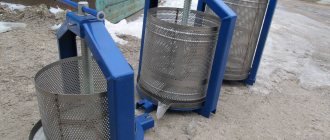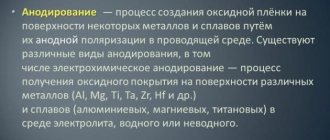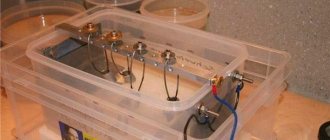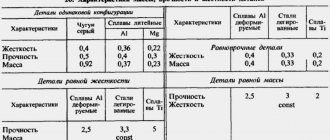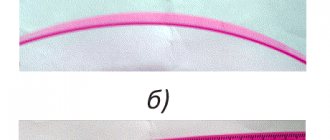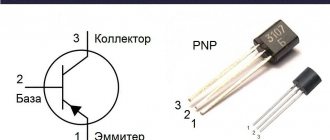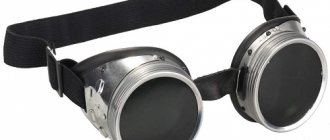People living in a noisy city often go to the countryside during vacations or weekends. And such a pleasant vacation can be ruined, for example, by a broken washing machine. There is a need to return to the city several tens of kilometers away, buy a new device, and organize its delivery to the site. Not everyone knows that you can make a homemade washing machine from improvised materials. This way you will solve the problem without wasting energy on exhausting trips and money on purchasing equipment. Let's figure out how to make your own washing machine.
When do you need something like this?
To some, the phrase “homemade washing machine” will seem absurd, but in reality such a solution can be very useful. For example, this is a great thing for a summer house. It’s hardly worth buying a new car, knowing that for most of the year it will just sit in an empty house.
Another situation is that the automatic washing machine has broken down and is taken to the workshop. The breakdown is serious, repairs are delayed, hand washing is not an option - you can spend a few hours and assemble a simple device with your own hands. Among other things, a homemade car will be a good solution for young families forced to huddle in rented apartments.
How and from what is it more profitable to make?
Trying to make things easier for yourself, the first step will be to try to fix the broken equipment. On the one hand, this is correct, but on the other hand, in most cases you will still have to organize a trip to the store to purchase replacement parts. If there was an activator washing machine of the “Malyutka” type at the dacha, then repairing it is too tedious and economically impractical.
What to do if there is no opportunity to go to the city? You can assemble a washing machine with your own hands from parts lying around in a country shed, taking some elements from worn-out equipment. Ideally, the designed product should eliminate the need for welding and turning. Assembly will take several hours.
Full-fledged washing machine from scrap parts
Of course, it will not be possible to make a homemade automatic device with many washing programs at home, however, if you have more or less straight hands, it is not difficult to assemble a simple machine with an activator.
The principle of its operation is extremely simple. There is a tank into which laundry is thrown. Water is poured into the tank and detergents are added. The engine rotates the activator (a plastic or textolite disk with blades), which in turn mixes the laundry. Such a washing machine can be made in just a few hours.
Types of mini washing machines
They are electrically driven, mechanical, operated by hands or feet, and non-automatic. As a rule, they only have vertical loading.
Semi-automatic machines operate on electricity, but do not require running water. Do not rinse or dry. Loading and filling are done manually.
All washing processes in activator machines take place in one drum. Electric models have heating. Filling water and turning it on and off is carried out by the owner.
Foot operate only through human efforts . They don't need a lot of self-filled hot water. Equipped with rinsing and drying functions.
All these little ones with a manual spin.
Advantages and disadvantages
Pros:
- Devices of this type save time, since it is not spent on heating.
- Models for the dacha can hold about ten kilograms of laundry at a time and allow you to add it during operation.
- They consume a minimal amount of water and electricity to heat it.
- The vertical design virtually eliminates vibration and minimizes noise.
- Wash more carefully.
- Their compactness and light weight allow them to be installed anywhere and easily moved in the trunk of a car.
- Simple, reliable and durable.
- Affordable prices.
Important! All types of these machines use low-foam hand washing powder.
Minuses:
- Small loading capacity for small children.
- Relatively low quality of washing.
- Difficulty in finding a repairman in case of infrequent breakdowns.
- Increased physical effort of the process operator.
- Lack of spinning and drying modes.
Preparing for work
The first step is to select parts for your future homemade washing machine. You will need:
- laundry tank;
- electric motor;
- sheet of plastic or textolite;
- shaft for transmitting rotation;
- connecting and threaded bushings;
- shaft casing;
- activator.
In addition, you need a sheet of rubber for making gaskets (an old tube will do), rubber plugs or bushings of small diameter, they will serve as limiters and will hold the lid on the tank during washing.
Useful videos
We bring to your attention a video about how you can make an automatic machine from the electric motor of an old machine, namely, how the engine from such a device helped create a band saw machine:
Detailed video instructions on what can be made from a drum (tank) removed from an old washing machine, namely, how to make a barbecue:
How to make a sharpener (emery) from a car engine:
Another idea on what can be made from a washing machine motor, namely, how to make a grinder and use the engine for this:
And here’s how a lawn mower works, which can be made from the engine of a Malyutka car:
Assembling a homemade washing machine
The most important part of the homemade product is the tank; as such, you can use a large enamel or aluminum pan; no changes will be made to its design, so at any time it can be used for its intended purpose. If you don’t have a large saucepan, you can make a homemade machine from a barrel of a suitable size.
The tank is ready, time to work on the erasing part (the cover with the motor, drive and activator installed on it). It will require a base. As such, a disk made from any sheet material available on the farm is suitable. It is better to take plastic or textolite, but you can get by with multi-layer plywood. When using wood, it is important to provide it with reliable protection from moisture. The diameter of the disk should be 10-15 cm larger than the diameter of the tank.
A hole for the shaft is drilled in the center of the disk; when using soft material, a sleeve should be pressed into it. It is recommended to use the unit from the “Skillful Hands” machine as an engine; the advantage of such a solution is that the engine does not need to be remade. If you use another unit, you will have to solve the issues of connecting the activator shaft; adapter bushings of different sizes will be required.
The motor is secured using the supplied bolts, washers and bushings; it is advisable to put a rubber gasket between it and the base; it will protect against splashes, reduce vibration, and reduce noise.
For a homemade washing machine you need an activator. It is unlikely that you will be able to make it yourself; it is easier and more rational to use a ready-made one with a bushing, for example, from a used “Malyutka”. The task of the activator is to mix the laundry, therefore, it must be lowered into the tank below the water level. To do this, the rotor shaft will have to be lengthened. If you use a motor from a machine, this problem is solved simply. The shaft already has an M10 thread cut; it is enough to select a rod of the same diameter and a connecting sleeve.
The rotating shaft must be closed, otherwise laundry will wrap around it, which is fraught with consequences. A small aluminum pan will work as a casing. A hole is drilled in its bottom. The activator sleeve is installed into it and secured from the inside with a nut. Since water will still get inside the “casing”, there is no need to use sealing collars.
The pan is attached to the disk from its lower side using self-tapping screws or bolts with nuts. The role of fastening corners will be performed by handles. As a result of all these manipulations, the following structure will be obtained: a disk, a motor is installed on top of it, its shaft passes through the base and the “casing” and is connected to the activator.
The washing machine you made with your own hands is almost ready, you just need to connect the motor to the power supply and take care of safety. For power, use a regular cable with a plug for household appliances; be sure to insulate the terminals using electrical tape or heat-shrink tubing. In addition, the engine must be closed. A cap from an old vacuum cleaner will do. To prevent the lid from “moving” during washing, shock absorbers are attached around the circumference of its lower part; plugs or rubber bushings will do.
You can start washing. Throw laundry into the tank, add water, add powder or liquid laundry soap. Close the lid and plug in the device.
Ultrasonic washing devices - 21st century technology or a scam?
Let's hit with ultrasound
How to practically use ultrasound was invented not so long ago - about a hundred years ago. As with most necessary and useful discoveries, the scope of ultrasound was initially limited almost exclusively to military needs.
But pretty soon it became clear that in addition to espionage and military-industrial tasks, ultrasound can also perform many absolutely peaceful functions. One of these useful properties was the ability to clean a variety of surfaces from heavy contamination.
Ultrasound generators placed in a liquid medium create acoustic waves and special effects (microbubbles) that can thoroughly wash metal parts with the most complex shapes.
Moreover, you can be sure that the most inaccessible corners and bends will be cleaned as thoroughly as the outer surfaces.
Ultrasonic generator IL10-0.4 (board)
In dentistry, instruments are cleaned and disinfected using ultrasound. It is also used to perform medical operations. You may have had to undergo professional ultrasonic teeth cleaning - a procedure that is not very pleasant, but quite effective.
So the very idea of washing household laundry using an ultrasonic generator lowered into a basin is quite reasonable. If boilers at thermal power plants and boiler houses can be cleaned with ultrasound from a thick layer of scale, then what does it cost for advanced technologies to cope with a pair of dirty socks?
They don’t do anything with the help of ultrasound today. You can, for example, restore the whiteness of your teeth
Distance from idea to implementation
It's no secret that when it comes to actually implementing the most exciting idea, the wings of that very idea have to be severely clipped. So much so that sometimes there is little left of it. Let's find out if this case is an exception to the rule?
On the website of one of the manufacturers of ultrasonic machines, I found an explanation of how such devices work: “The operating principle of an ultrasonic washing machine is based on the conversion of electrical voltage that enters a piezoceramic element (ultrasonic generator) into high-frequency sound vibrations (ultrasound). During our usual mechanical washing, the speed of the layer of liquid closest to the surface of the fabric is very low (relative to the fabric itself), which prevents the penetration of detergents into the fibers of the fabric. This makes the washing process more difficult and slow. Under the influence of ultrasonic vibrations, water molecules “accelerate” and the direction of their movement changes with high frequency. As a result, the speed of movement of the soap solution in the near-surface layer increases, enhancing the interaction between it and the product immersed in it (but this does not mean that everything in your basin will bubble up and splash out “overboard”). During ultrasonic washing, a huge number of microscopic bubbles are also formed in the soap solution and the pressure inside them briefly increases. Bubbles penetrate between the fibers of the fabric; upon contact with them, microexplosions occur, which disrupt the adhesion of dirt particles to the fibers of the product and facilitate its removal. And since the size of these bubbles is comparable to the size of the molecules, they easily penetrate not only between the fibers, but also through them, cleaning the threads of the fabric from the inside and renewing it. At the same time, washing is gentle, and the laundry is not deformed, that is, it is not damaged by mechanical action (friction), as during the normal washing process.”
The “Declaration of Intent” turned out to be impressive. What do we actually get?
Ultrasonic washing devices, or “handheld washing machines” as they are also called, are, of course, not industrial ultrasonic generators. Among their main advantages are low power - from 5 to 15 W, safety and relatively low cost - from 1 to 2 thousand rubles.
This is what a regular ultrasonic washing “machine” looks like
I asked my dentist Nina Aleksandrovna how powerful professional ultrasonic systems are for cleaning teeth.
It turned out that the smallest cleaner with a capacity of 0.8 liters is at least twice as powerful as the device that promises to wash blankets in the bathtub. Ultrasonic cleaners for 10 liters have a power of 150-550 watts.
“But they’re standing - wow!” and Nina Alexandrovna spread her arms like a real fisherman. “This little one is 300 euros, and the larger ones are generally a four-digit sum.”
Ultrasonic washing (bath) for pre-sterilization cleaning of medical instruments
It is clear that high power for a household ultrasonic washing machine will significantly reduce its safety, so manufacturers had to make a compromise (read: reduce power).
Such devices do not consume a lot of energy, so they won’t electrocute you.
However, you should not expect that the ultrasonic radiation of a low-power machine will be able to wash a mountain of laundry in a large container with an equally excellent effect.
But maybe a low-power machine in a small basin will be effective? Maybe the 5 W power of the Retona machine is enough to wash at least one shirt? I wanted to test these theoretical calculations in practice.
Elementary design of an aquarium compressor
For small washing volumes, you can make a simple homemade washing machine from a bucket and a regular compressor. The role of the activator in it is performed by a stream of small bubbles that rise from the sprayer. The air pressure helps to mix the water, “knocks out” dirt, cleaning clothes. Of course, you shouldn’t expect high performance from such a design, however, it will quickly refresh your laundry and remove simple stains.
In principle, the manufacturing process of this mechanism is limited only to selecting a suitable container for the tank and installing a sprayer inside it.
Homemade manual washing machine from a bucket and plunger
The designs described above require a connection to the network, but the next one allows you to do without electricity at all. This homemade washing machine will definitely come in handy for lovers of hiking and outdoor recreation. To make it you will need a plastic bucket with a lid and a regular plunger. A hole is cut in the lid of the bucket along the diameter of the plunger handle; it is advisable to reinforce it with a plastic sleeve.
The rubber part of the plunger needs some modification. Windows are cut out in it (from 3 to 6). The handle is inserted into the hole in the lid, water is poured into the bucket, laundry is placed and detergent is added. The device is easy to use - you just need to raise and lower the plunger handle, mixing the contents of the tank.
It’s good to have an automatic washing machine at hand, but sometimes you don’t have one, which means you need to use your ingenuity. With a little effort, a few hours of work, washing will become a simple and enjoyable task again.
Review of brands
Let's get acquainted with a number of mechanical devices from various manufacturers that operate only autonomously.
American Wonderwash has a modern design and small size. Equipped with a filling hose. Consumes 3 liters of water to wash and rinse 2.2 kilograms of laundry. The drive is mechanical and manual. Has a vacuum device for removing stains. Costs from 3,000 to 5,000 rubles depending on the model.
Almost twice as expensive, but more productive is the foot Drumi , produced by the Canadian company Yirego. The movement is started by a pedal, using 5 liters of water per operation. Spins up to 2.5 kilograms of laundry.
Invented by an Australian tourist, Scrubba looks like a bag. By loading clothes into such a machine and pouring a bucket of water, you will wash it thanks to the corrugated lining from the inside. To do this, you just need to “play football” with the device. Travel lovers appreciate its lightness (150 grams) and low price (about 1,200 rubles).
The Shaking Washer prototype appeared more than a century ago in the USA and was invented by lovers of fresh socks. And nowadays, the Jung Seub Lee company produces mainly devices for this purpose. The energy source is batteries. And operation resembles the actions of a bartender with a shaker. Only the powder solution is shaken inside. Costs 4,000 rubles.
